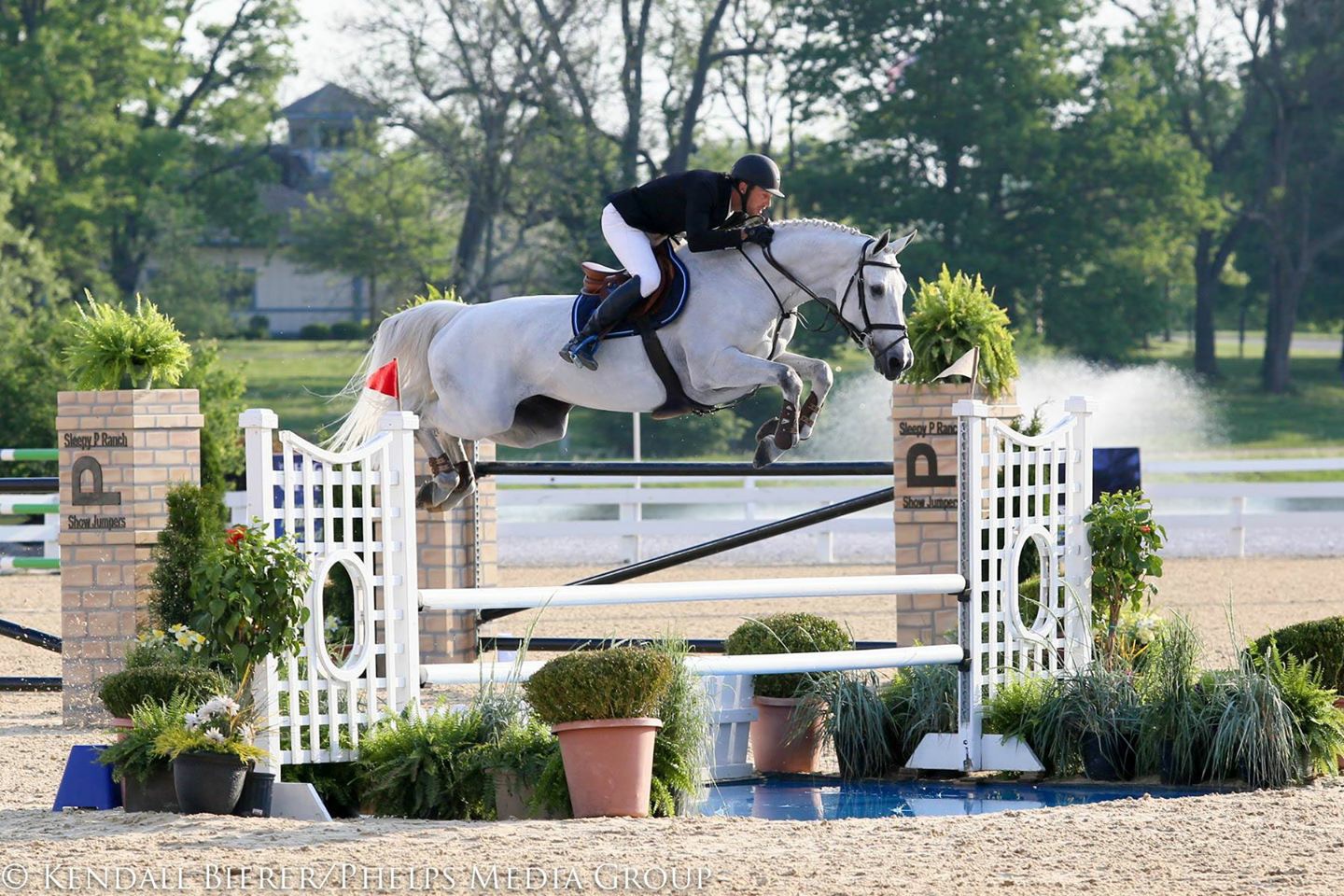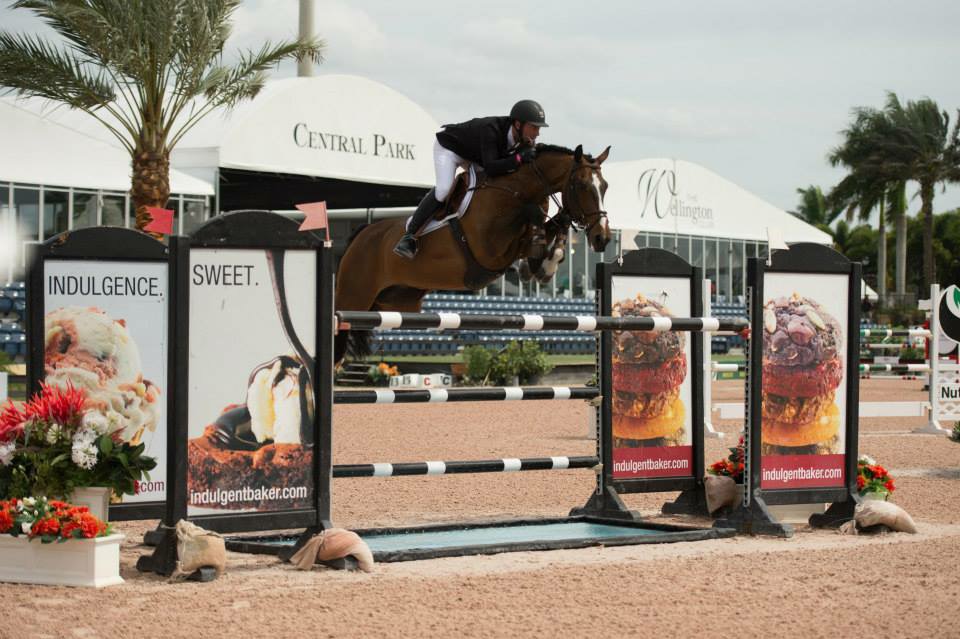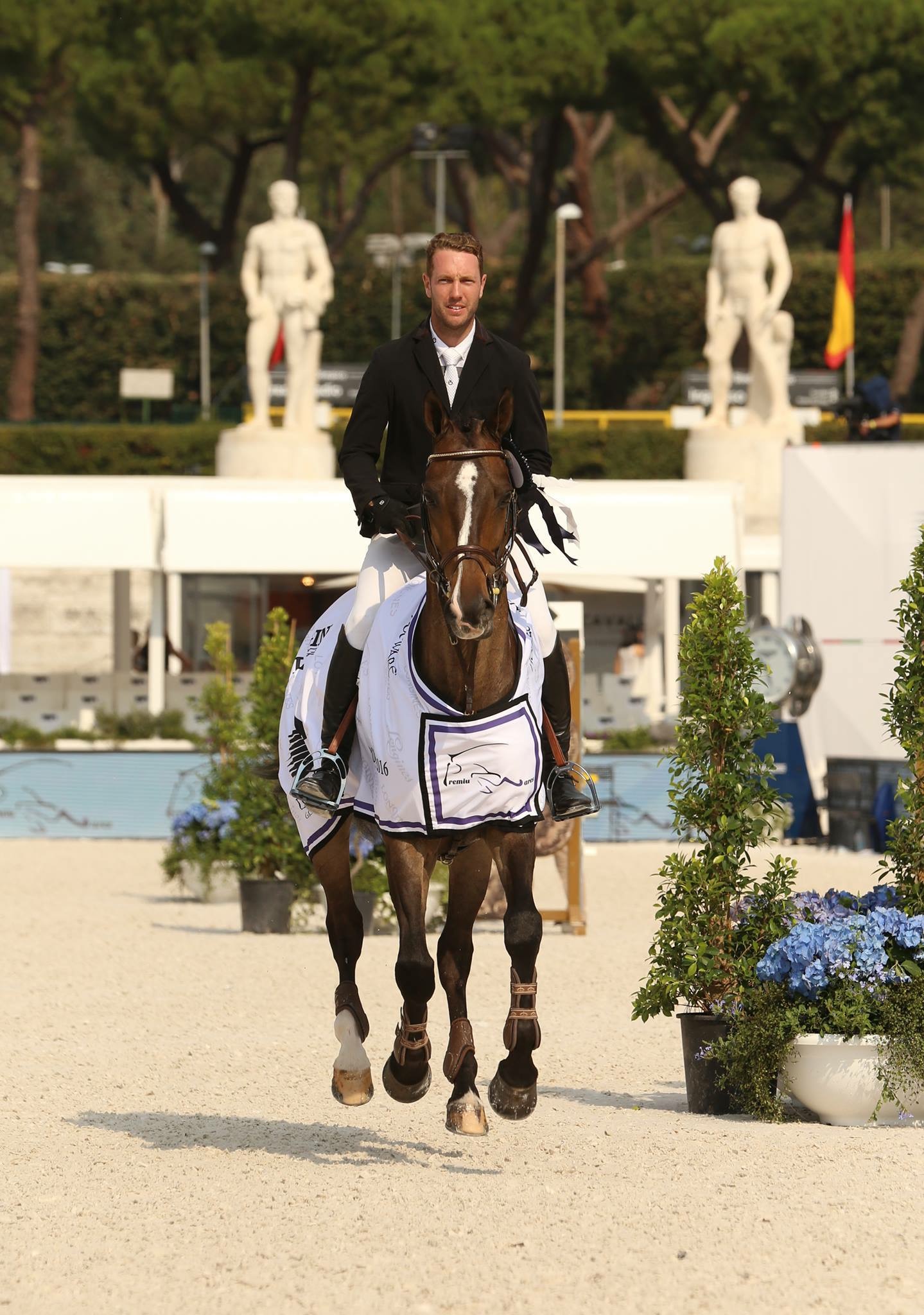
A Formula for Finding the Right Horse for a Rider at any Level with Daniel Zetterman
Blog
A Formula for Finding the Right Horse for a Rider at any Level with Daniel Zetterman
Purchasing horses is an art and a science. There is no standard formula, and we chatted with Daniel Zetterman, a professional show jumping rider, trainer, and instructor on how to purchase the right horse for a client that will match their level and help them advance.
Daniel grew up in an elite equestrian family in Sweden, and during that time, many equestrians from the United States were traveling to Europe for horse sales. He eventually moved to the United States, and Daniel and his wife Alyssa operate Zetterman Equestrian in Wellington, Florida where they work with clients and horses at all levels.

Chellana jumping in Lexington, KY. Photo: Kendall Bierer/Phelps Media Group
“Selecting prospective horses depends on the client’s level of experience and their budget,” Daniel says. “We look at horses that work for the rider’s knowledge and wallet. Selecting prospective horses is a customized process for each client. The riders style, precision and experience are cornerstones of the selection process.”
For example, if Daniel has a client that is young or competing in the adult or masters division he wants a horse with more experience that is easier to ride. The horse might be a little older, perhaps 12-14 years old, but it must be quick thinking, nimble, always correcting problems, and game.
“With an up-and-coming junior or a talented and experienced amateur competing in the mediums you want a horse is in its peak age, 9-12yrs old and has strong competition results,” Daniel says. Among the various prospects that meet these qualifications, you also have to find a horse that matches the rider in size and engine power.
A rider’s accuracy is another determining factor in selecting prospects. If a rider makes mistakes on distances you need a horse that will carefully correct the distance and not get offended. A rider with a higher level of accuracy can consider horses with more finesse. The horse and rider must complement each other.
“You want a horse that is comfortable taking the rider around the course for a client moving up to the next division,” says Daniel. “But you must also consider how a horse can be useful so that a rider doesn’t outgrow the horse too quickly. Meaning that the more accurate the rider gets at the new higher level the horse needs to be sharp enough to be competitive.”

Daniel and Zhivago at the Winter Equestrian Festival in Wellington. Photo: Katherine Hay Coyle.
Daniel has a vast network of colleagues on the east and west coast that he collaborates with to identify prospective horses, in addition to watching horses at shows, or finding them online. “We start with videos – it gives you a first impression,” he says. “Then, we go and try the horse and see if it matches the vision we have created from the video.” Daniel and his client will try a horse at least twice before purchasing it, both of them riding the horse on each visit.
“As a professional, the horses I’m selecting for myself are a little different,” he adds. “They are younger – think of them as a senior in high school. You come in for the college years and can gel with the horse and take them to the next level. As a professional, you are with the horse for their big experiences over the next years and set the foundation for their future. Some of these horses are sold to an ambitious young rider or amateur, and others we try and make them the best they can possibly be and compete at Grand Prix.”
Through it all, horse purchases remain an art and a science, and sometimes yield unexpected results. Daniel’s father competed in the show jumping competition at the 2002 World Equestrian Games in Jerez de la Frontera, Spain. He borrowed Daniel’s No Fear skateboarding baseball hat for the trip. Royne Zetterman had a successful competition placing in the top 25, and earning the team silver medal with Sweden.
“Dad wanted to name his next horse No Fear,” Daniel recalls. “We went to a Hanoverian auction and he bought a four-year old by Fly High - the same stud as Shutterfly. My father told the breeders he was going to name the horse No Fear, and they gave him a funny look. It turned out to be one of the spookiest, but also most ambitious horses. I had a lot of good results and clear rounds with him.”

Fleccu winning at the Global Champions Tour in Rome. Photo courtesy of Daniel Zetterman
There are universal traits that Daniel is looking for in all of his prospective horses. They must be quick thinking and trying to solve problems – the horse should be quick to correct itself after a mistake is made.
“We also want a horse that has adjustable gaits for the technical parts of a course,” Daniel says. “I will overlook unorthodox jumping techniques or odd behaviors such as sticking their tongue out if the horse always gets clear rounds. Ultimately, for any rider, we want a horse that tries hard and enjoys working.”
This is the second article in a three part series with Daniel Zetterman. In the first part of our series, Daniel discussed recognizing potential in the young show jumping prospect.
